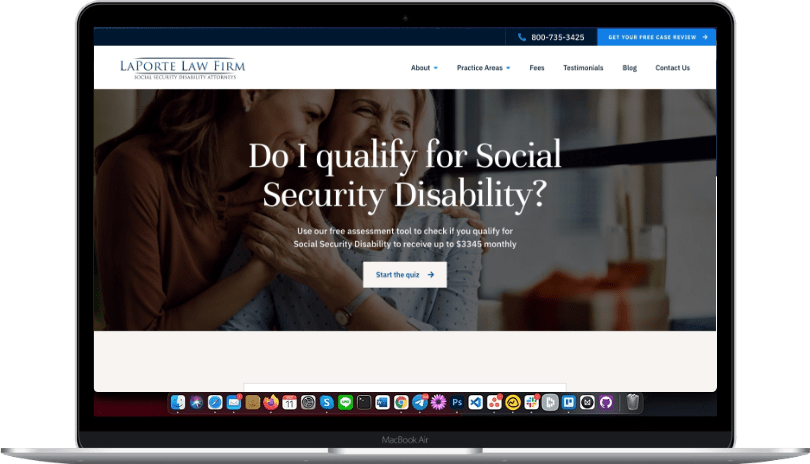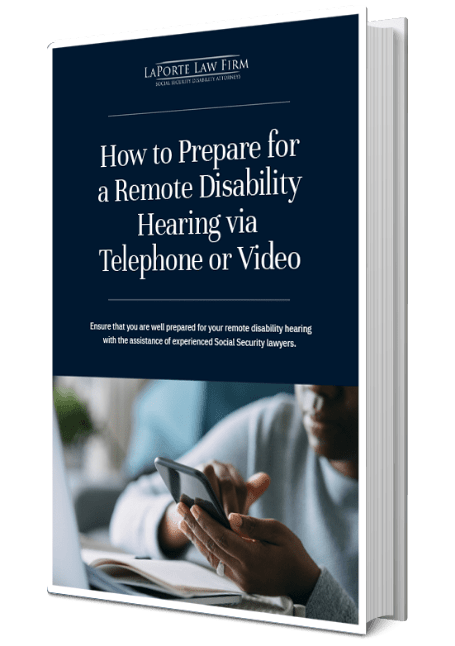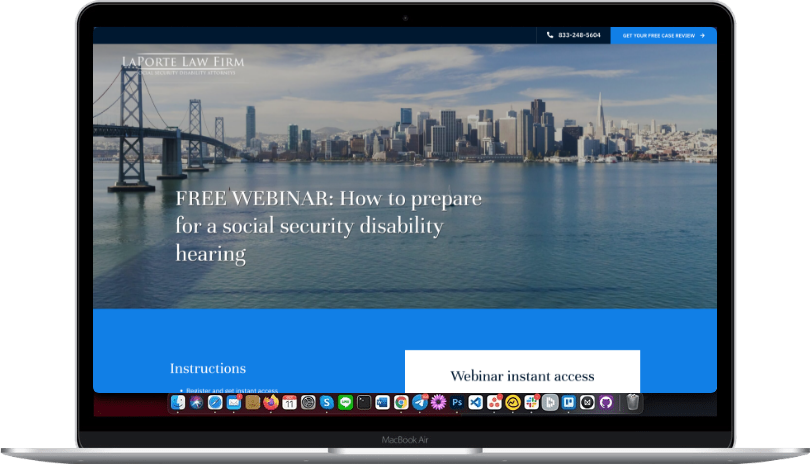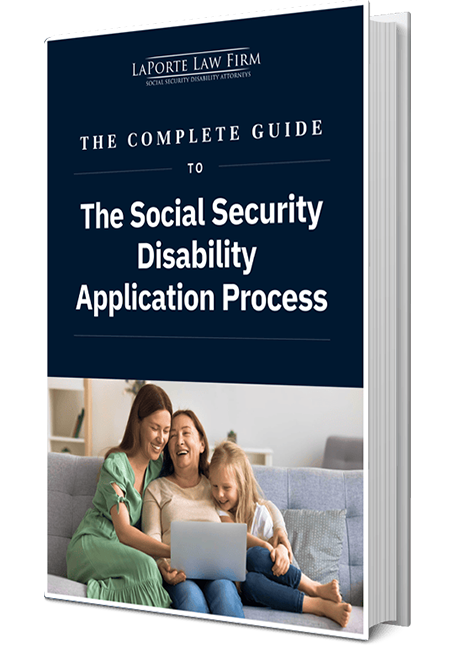
Supplemental Security Income (SSI) is a crucial federal initiative funded through general tax revenues. It serves as a lifeline for aged, blind, or disabled individuals with limited income and resources, enabling them to secure essential needs such as sustenance, clothing, and housing.
SSI eligibility hinges on factors such as asset thresholds, disability status, and age.
Despite SSI’s pivotal role in providing a safety net, SSI confronts persistent challenges exacerbated by mounting demand against limited resources. The SSA Equity Study seeks in part to reduce the barriers to the SSI program for eligible participants.
Related reading: What Can I Use SSI Money For?
Understanding the SSA Equity Study
The SSA Equity Study is a comprehensive examination that delves into multiple facets of the SSI program. It meticulously scrutinizes the application procedures, benefits allocation, and the efficacy of the appeal mechanisms. By employing rigorous data analysis and engaging with stakeholders, the study seeks to reveal any inequities in access to and distribution of benefits across various demographic segments. Its overarching objective is to foster equity within the SSI program, guaranteeing equitable and unbiased treatment for all eligible beneficiaries regardless of race, gender, ethnicity, or socioeconomic status
Key Findings of the SSA Equity Study
The SSA’s first Equity Action Plan was released in 2022, and it has led to the development of various offices and programs all aimed to provide equitable access to financial assistance to the diverse communities the agency serves.
Office of Transformation (OT) and Customer Experience (CX) Team
The Office of Transformation (OT) at the SSA has been established to lead significant improvements in the agency’s business operations. Its mission is underpinned by the dedicated Customer Experience Team (CX), which is focused on enhancing access and service delivery across all SSA programs, with an emphasis on advancing equity for individuals with disabilities.
By leveraging innovative strategies and technologies, the OT and CX aim to streamline processes, improve responsiveness, and ensure that all beneficiaries receive fair and equitable treatment. Through these efforts, they seek to create a more inclusive and accessible environment that meets the diverse needs of the individuals and communities served by the SSA.
Office of Native American Partnerships
The Office of Native American Partnerships is responsible for overseeing policies that specifically cater to the needs of American Indians and Alaska Natives within the SSA. This office is a cornerstone in enhancing and nurturing the SSA’s relationships with tribal communities. It operates as the main point of contact for tribal affairs, ensuring that services are delivered in a manner that is not only culturally sensitive but also highly effective. By fostering meaningful partnerships and understanding the unique cultural contexts of Native American populations, this office strives to promote equitable access to SSA programs and services.
Language access in application forms
To better serve individuals with limited English proficiency (LEP), the SSA has expanded language support to include instructions in 15 additional languages in the Social Security card application form (SS-5). These languages are in addition to the existing English and Spanish options. This initiative aims to simplify the application process and ensure that all applicants, regardless of language proficiency, can easily understand and complete the necessary forms.
Broadening language accessibility promotes inclusivity and facilitates greater participation in the SSA’s programs, thereby supporting a diverse population across various linguistic backgrounds.
Voluntary race and ethnicity reporting
The SSA has incorporated race and ethnicity inquiries into online applications for Social Security numbers and replacements. This initiative aims to gather comprehensive demographic information effectively. Furthermore, the agency has developed posters available in 24 languages to encourage voluntary reporting. These measures aim to promote inclusivity as well as to enhance the SSA’s understanding of demographic trends and ensure equitable representation across diverse communities.
Increase in SSI applications
The SSA launched strategic outreach initiatives with the goal of boosting SSI application rates by 25% in underserved communities. So far, these have resulted in a significant 15% increase nationwide. These proactive efforts have proven pivotal in expanding access to crucial benefits, ensuring that eligible individuals across the country receive vital support.
Through targeted outreach, the SSA has successfully engaged marginalized populations, effectively closing gaps in service delivery and promoting equity across diverse demographic groups.
Gender equity and equality in SSA programs
In a substantial policy update, the SSA has implemented a new protocol allowing individuals to self-select their gender on Social Security records. This progressive change removes previous medical or legal documentation mandates, marking a significant advancement in fostering gender equity and inclusivity within SSA programs. It also reflects the SSA’s commitment to ensuring that all individuals are treated with dignity and respect in accessing benefits and services. Additionally, it empowers individuals to define their gender identity without bureaucratic hurdles.
Potential Impacts of the SSA Equity Action Plan
The SSA Equity Action Plan can benefit individuals and communities through:
Policy changes
The findings of the SSA Equity Action Plan are poised to influence policy reforms aimed at addressing identified disparities among SSI recipients. Also, the study’s recommendations could lead to a more equitable allocation of resources and improved outcomes for those who rely on SSI for financial support.
Advancement in program administration
Improved administrative strategies could streamline application processes and optimize resource management within the SSA. This could lead to more efficient service delivery and better support for SSI applicants and recipients.
By identifying inefficiencies and implementing streamlined procedures, the SSA can enhance operational effectiveness and responsiveness to the needs of beneficiaries.
Better communication strategies
Enhanced communication initiatives, informed by the SSA Equity Study, could simplify program information for SSI applicants and recipients. More transparent communication channels would foster transparency and empower individuals to navigate the complexities of the SSI program more effectively. Through these, the SSA can ensure that beneficiaries are well informed and can make informed decisions about their benefits.
Enhanced outreach for vulnerable populations
The study’s findings may spur increased efforts to reach vulnerable populations who may qualify for SSI benefits but are currently underserved. Targeted outreach campaigns and community engagement initiatives could raise awareness and ensure eligible individuals access the support they are entitled to. Expanding outreach efforts can help the SSA reduce barriers to access and provide critical assistance to those most in need.
Benefits for SSI recipients and applicants
Anticipated changes resulting from the SSA Equity Action Plan could lead to streamlined procedures, improved accessibility of information, and increased support for SSI recipients and applicants. These enhancements will create a more user-friendly experience within the SSI program, enhancing overall satisfaction and ensuring that individuals receive the assistance they need.
What Does It Mean for You?
The SSA Equity Study represents a significant milestone in evaluating and improving equity within the Social Security Administration’s programs. While the study’s findings may suggest areas for improvement, implementing policy changes can be complex and involve multiple stages of review and approval. As such, immediate impacts on individual benefits or eligibility criteria may not be imminent.
However, staying informed about potential developments and understanding how they could affect personal circumstances is crucial. By remaining vigilant and proactive, individuals can better prepare for future changes that may impact their eligibility or benefit amounts under the SSI program. Continuous engagement with SSA updates and policies ensures that individuals are well equipped to navigate their interactions with the agency and access the support they need effectively.
If you have any questions about the Equity Action Plan and how it impacts SSI beneficiaries and applicants, reach out to LaPorte Law Firm.
FAQs
Improving equity to improve access to SSA’s benefits faces multifaceted challenges rooted in the inherent complexities of our administrative systems. These challenges notably hinder access for vulnerable groups such as people living with disabilities, those with limited English proficiency, and households grappling with the financial impact of disability.
Addressing these challenges requires a comprehensive approach that streamlines administrative procedures and integrates mechanisms to ensure inclusivity and accessibility for all demographics. By fostering a more inclusive administrative culture and enhancing service delivery mechanisms, the SSA can mitigate these barriers and foster greater equity among its diverse population segments.
The SSA has identified several successful initiatives aimed at enhancing equity. These efforts are outlined in their Equity Action Plan 2023 Update, which is based on internal assessments, input from program offices, engagement with local communities through outreach events, and existing evidence. The SSA has reported an interest in continuing to actively involve the public in these initiatives throughout this year and beyond.
Examples of these initiatives include:
- Enhancing access to supplemental security income (SSI): The SSA is working to improve access to the SSI program for women, families, individuals from underserved communities, and others facing barriers. This involves streamlining processes, such as simplifying the SSI application process, and increasing outreach efforts.
- Improving language access: To ensure equitable access to SSA programs, the agency focuses on improving services for customers whose primary language is not English. This initiative aims to bridge language barriers and provide comprehensive support.
- Reducing SSI underpayments: This effort mainly benefits customers disproportionately affected by poverty, ensuring they receive the support they are entitled to without delay.
- Raising awareness of survivor benefits: This initiative seeks to increase awareness among children, families, same-sex couples, and individuals significantly impacted by COVID-19 about eligibility for survivor benefits and ensure that all eligible individuals can access crucial benefits during challenging times.
- Enhancing race and ethnicity data collection: The SSA is expanding its efforts to collect and utilize race and ethnicity data to better identify, monitor, and address service inequities. This data-driven approach helps SSA tailor services more effectively to meet diverse needs.
These initiatives underscore SSA’s commitment to promoting equity and inclusivity across all their programs and services.
Improving equity within the SSA fosters fairness and generates significant economic and social benefits. The SSA’s Equity Action Plan 2023 Update is designed to enhance accessibility and fairness in delivering Social Security services by improving customer experience and dismantling systemic barriers to participation.
- Economic benefits: The different programs of the SSA are a vital income source for many beneficiaries across the United States. Research from the SSA indicates that in 2015, Social Security benefits constituted at least 50% of income for 4 in 10 retirees and at least 90% for 1 in 7 retirees. By ensuring equitable access to programs such as SSI, the SSA aims to reduce financial disparities among vulnerable groups, including women, families, and individuals from underserved communities. Addressing pending SSI underpayments directly impacts poverty alleviation efforts by ensuring timely and accurate financial support to those who need it most.
- Social benefits: Promoting equity within SSA programs enhances financial stability and fosters social inclusion and resilience. By improving access for customers who primarily communicate in languages other than English, SSA supports diverse communities in accessing critical services without language barriers. Raising awareness about survivor benefits eligibility among diverse groups, including children, families, same-sex couples, and those disproportionately affected by COVID-19, ensures that all eligible individuals receive necessary support during times of hardship.
The Action Plan focuses on five strategic areas identified through rigorous internal assessments, feedback from program offices, and engagement with local communities: 1) enhancing access to SSI for marginalized groups; 2) improving equity in program access for non-English speakers; 3) reducing SSI underpayments to mitigate poverty disparities; 4) increasing awareness of survivor benefits eligibility across diverse demographics; and 5) expanding race and ethnicity data collection to effectively identify and rectify service inequities.
By addressing these focus areas, SSA aims to administer programs that not only eliminate barriers to participation but also enhance service delivery and responsiveness to the needs of all stakeholders.
In response to Executive Orders 13985 (January 2021) and 14091 (February 2023), the SSA has comprehensively evaluated the equity dimensions within its operations. Central to this effort is the compilation of various metrics and data sources that illuminate the racial and ethnic composition of the Social Security-covered population.
The SSA utilizes a range of research, statistical publications, and public-use survey data to gather insights into equity metrics. These resources include studies and reports produced internally by the SSA and those developed with SSA funding or support from independent researchers and organizations such as the Census Bureau. These metrics provide a detailed understanding of how different demographic groups interact with and benefit from SSA programs.
By leveraging these metrics, the SSA aims to identify disparities, monitor progress, and implement targeted interventions to promote greater equity across its services. This ongoing assessment informs policy decisions and strengthens the SSA’s commitment to fostering a more inclusive and equitable social security system for all beneficiaries.
SSI lifts more people above the poverty line than any other program, so studying its efficacy and improving its efficiency can help an even greater population.















